Submitted Review
Lewis Miller
It’s an odd thing don’t you think? Sitting in a studio, attempting a precise and poetic translation, abetted by palette and paint, before arrangements of so much rotting meat, ageing eggs, gently wilting flowers, some oysters heading from fresh to fetid, all the while striving to capture authenticity and likeness, or perhaps just a slowing of time, for a time, in fixing an image to canvas via a variety of effects. Yet these modest actions and ambitions remain central – perennials for a raft of artists as they demonstrate the value of irony-free and concentrated looking, in real time.
Lewis Miller, earlier famous for his Archibald winning portrait of that slyly casual, touchy-feely minimalist Allan Mitelman (Miller’s win – with an ‘over-sized head’ in the dull parlance of a standard Murdoch minion – not before time) has continued to elevate frank and fearless observation of figure and food-stuff, keeping scale tight, brushwork deceptively loose, whilst with a hovering mortality in soft focus.
‘…arrangements of so much rotting meat, ageing eggs and gently wilting flowers’
At Australian Galleries, Miller presents extensive painterly iterations of limited subjects – the oysters, garlic, cuts of meat, crabs and eggs – each precise yet relaxed, in still-life studies exemplarily formed through the operating principle of ‘look and put’. Yet a new takeaway for this viewer is an evident interest in the painterly ground anchoring many of these forensically elaborated images.
A standout work is a layered study incorporating ham-hock, warmly toned eggs, a cropped chef’s knife and a deliciously painted patchwork of breezily described newsprint (yesterday’s news perhaps, but also history as handy wrapping). Without a stretch this modestly redolent painting exemplifies all that is great and good in Millers long-term eschewing of fashion and facile photo fakery – each element fully ‘there’ as painted fact in a playfully jumbled composition challenging pictorial perspective. The newsy surface becomes a field of intuitive and inventive shorthand, reminding of Freud’s (Lucian, not Sigmund) febrile fidelity but without his crust, the oily meaty medium of Soutine but without his strained mannerism, the dash of Manet but without his confected charm. Students of ‘painting’ as focus, fact and finesse, be they arch or earnest, should make haste to Collingwood.
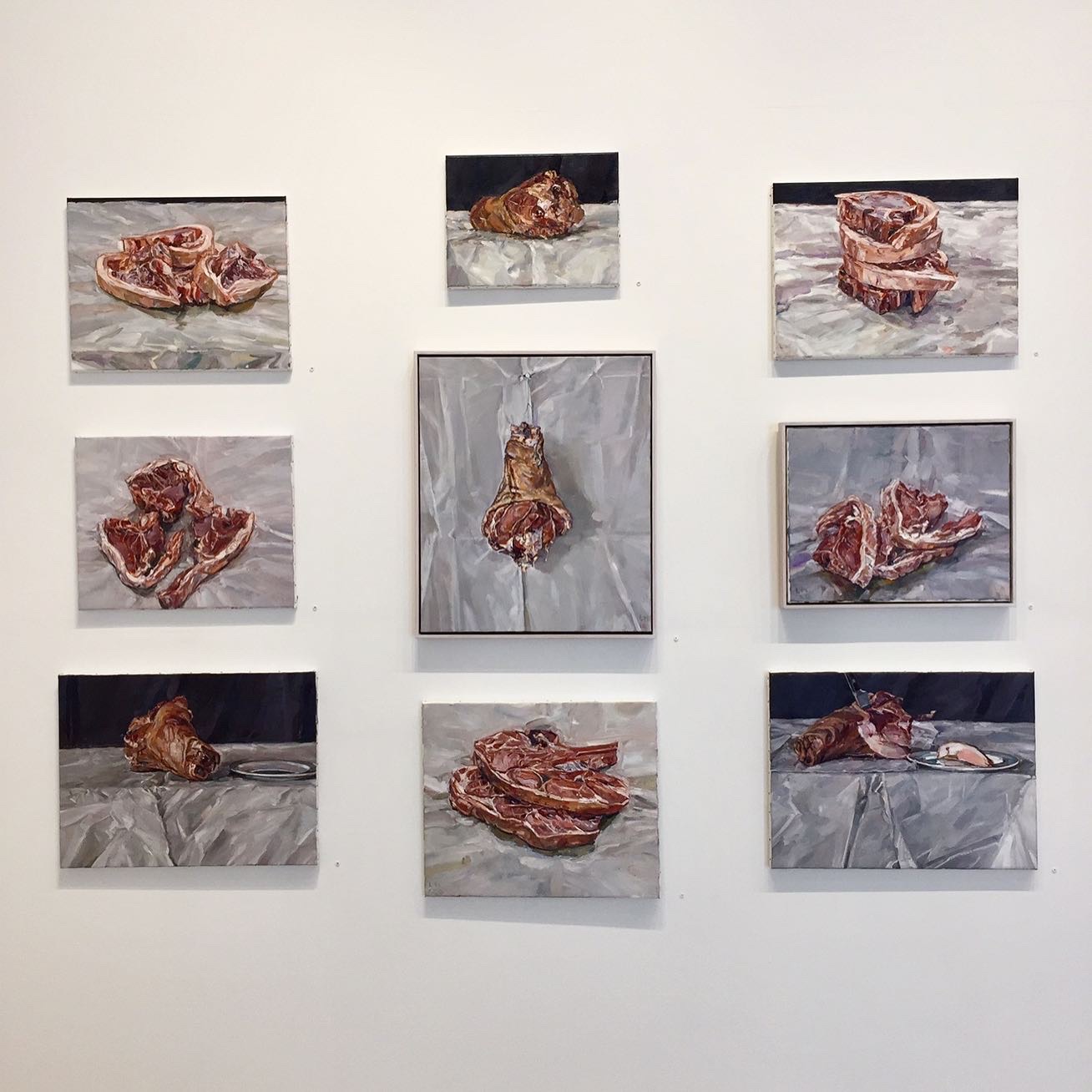
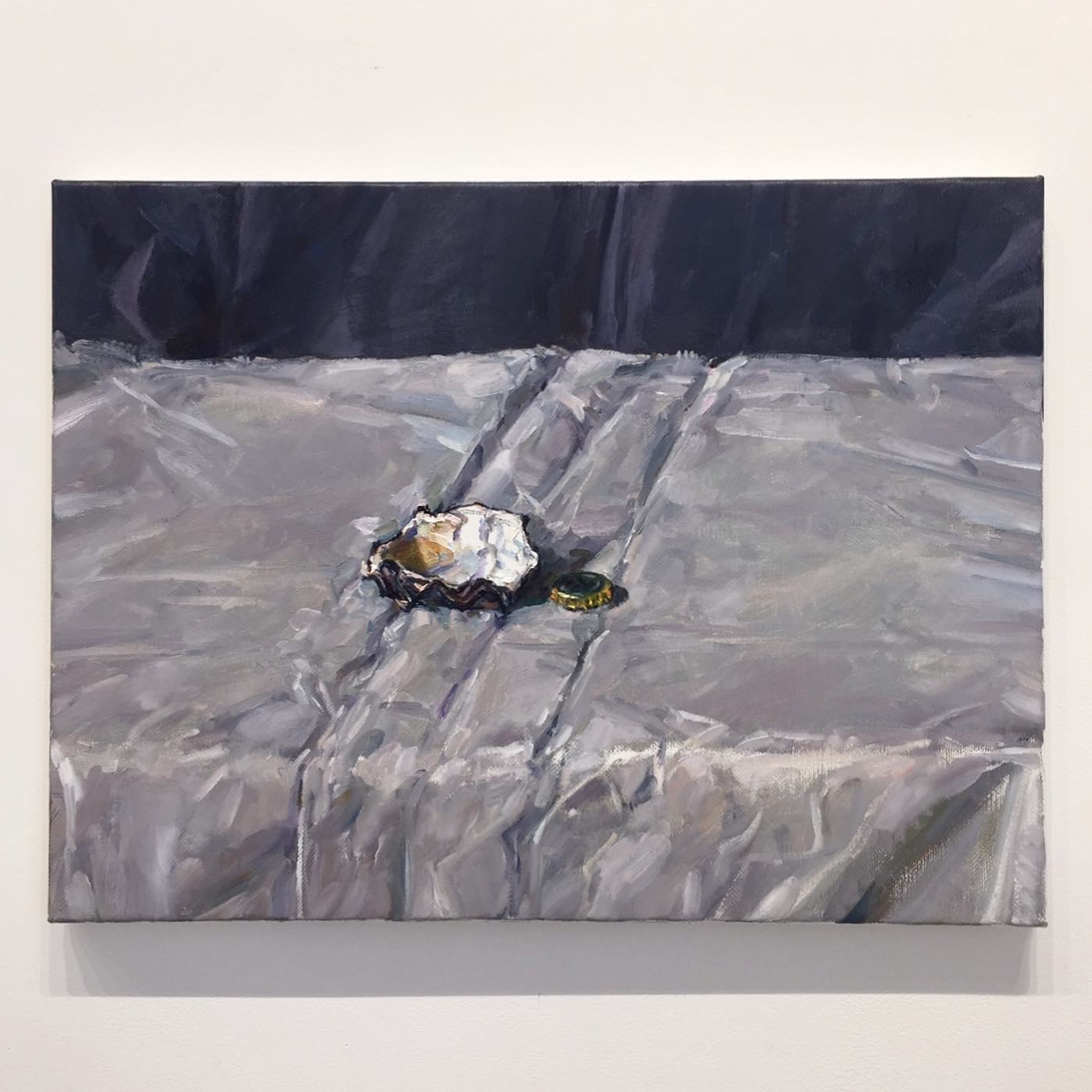
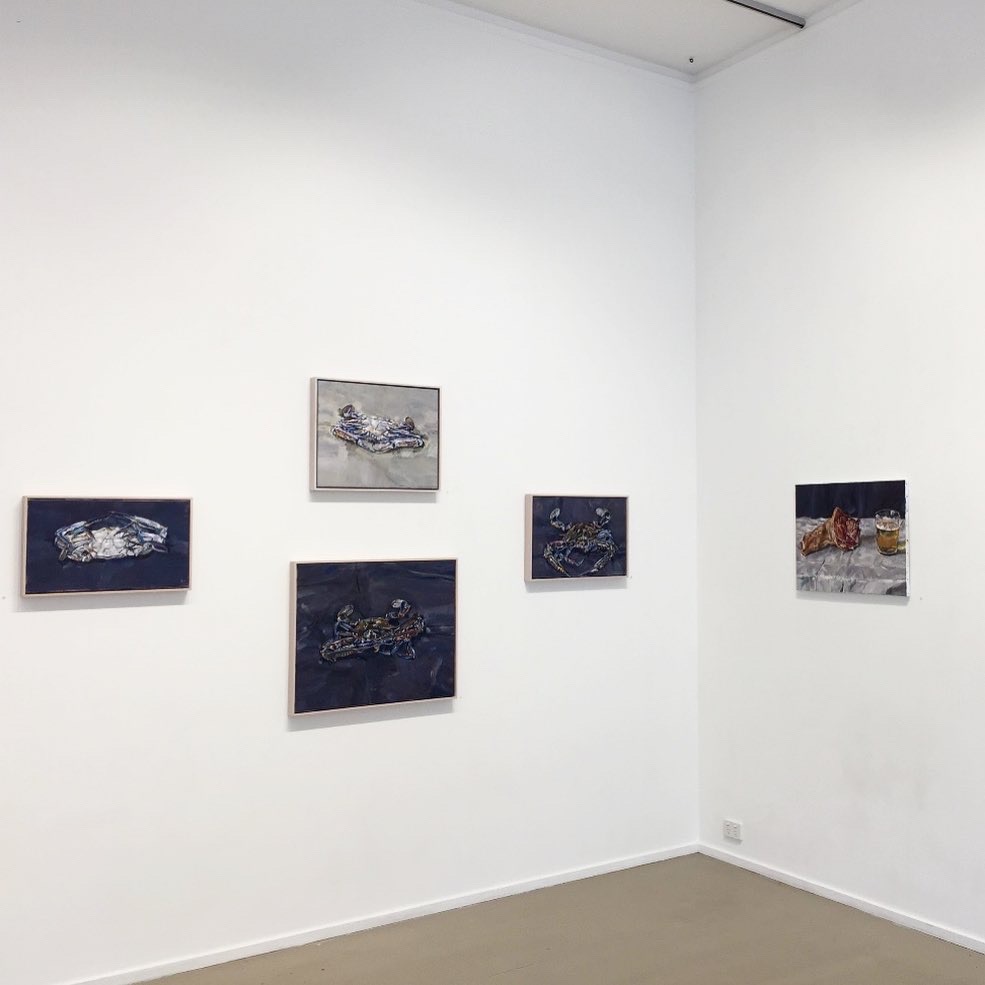
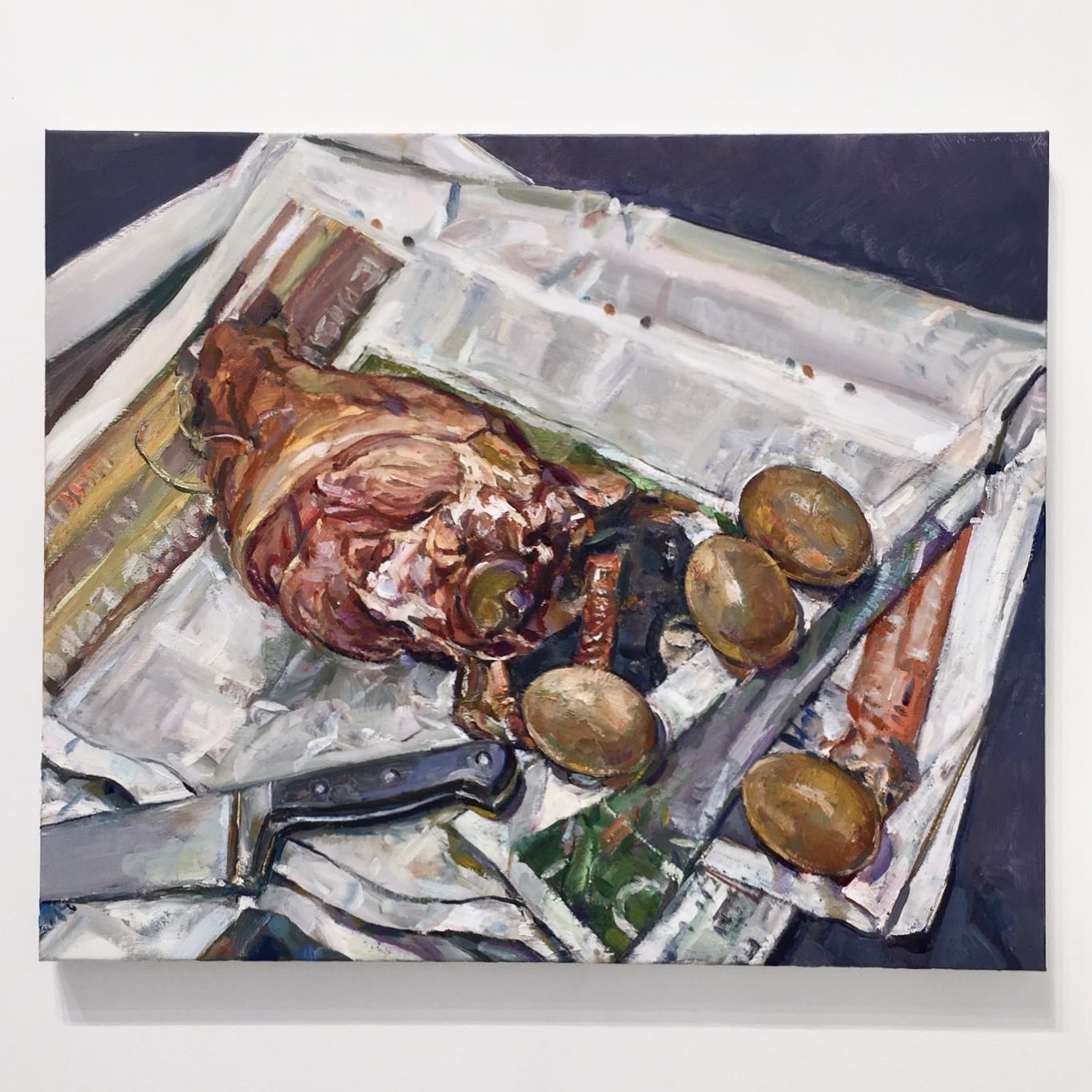
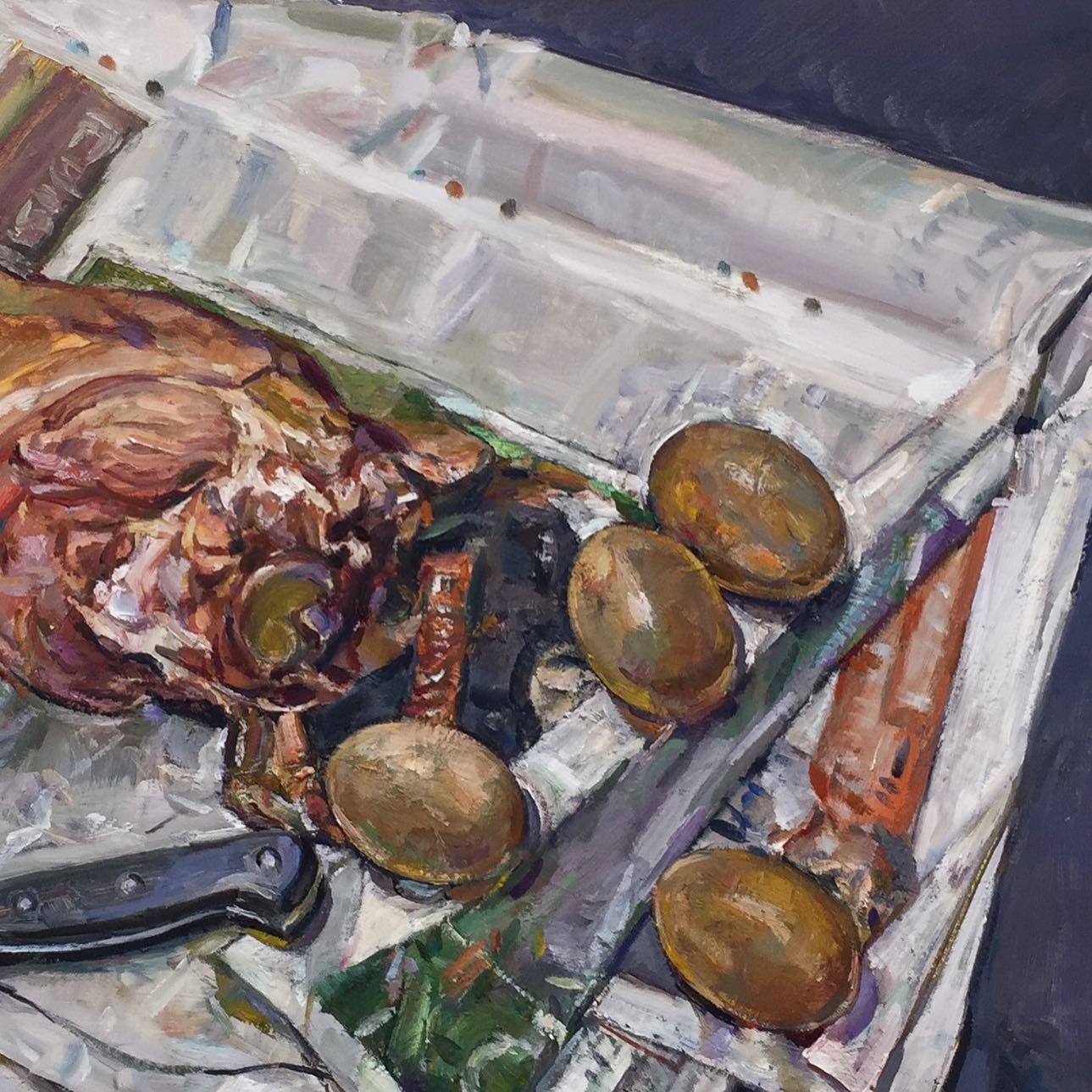
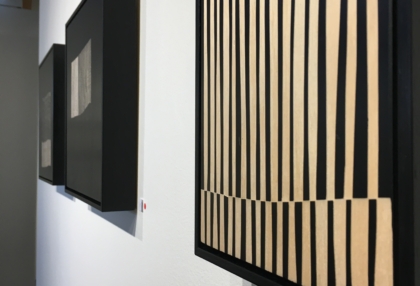
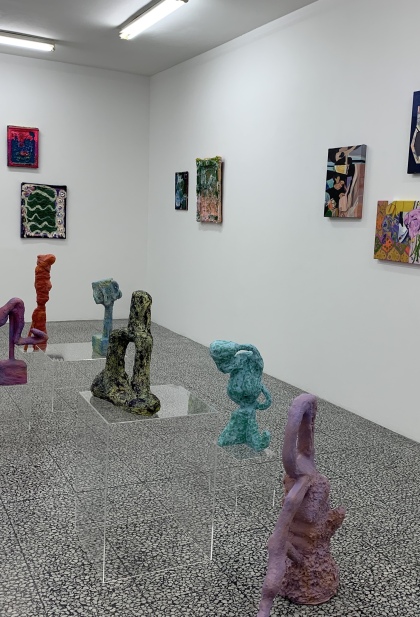
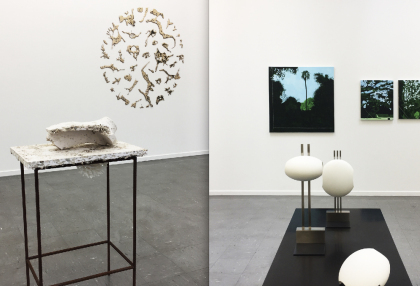
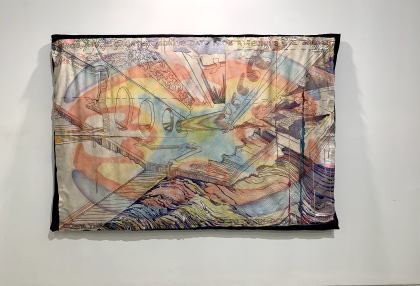
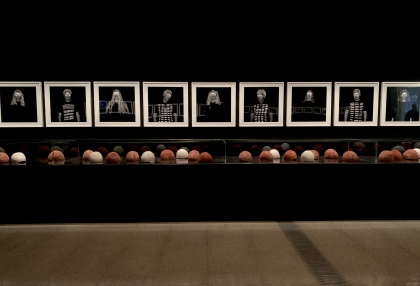
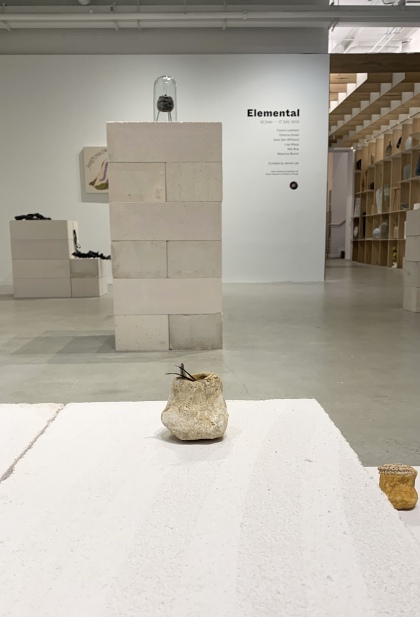
No Comments